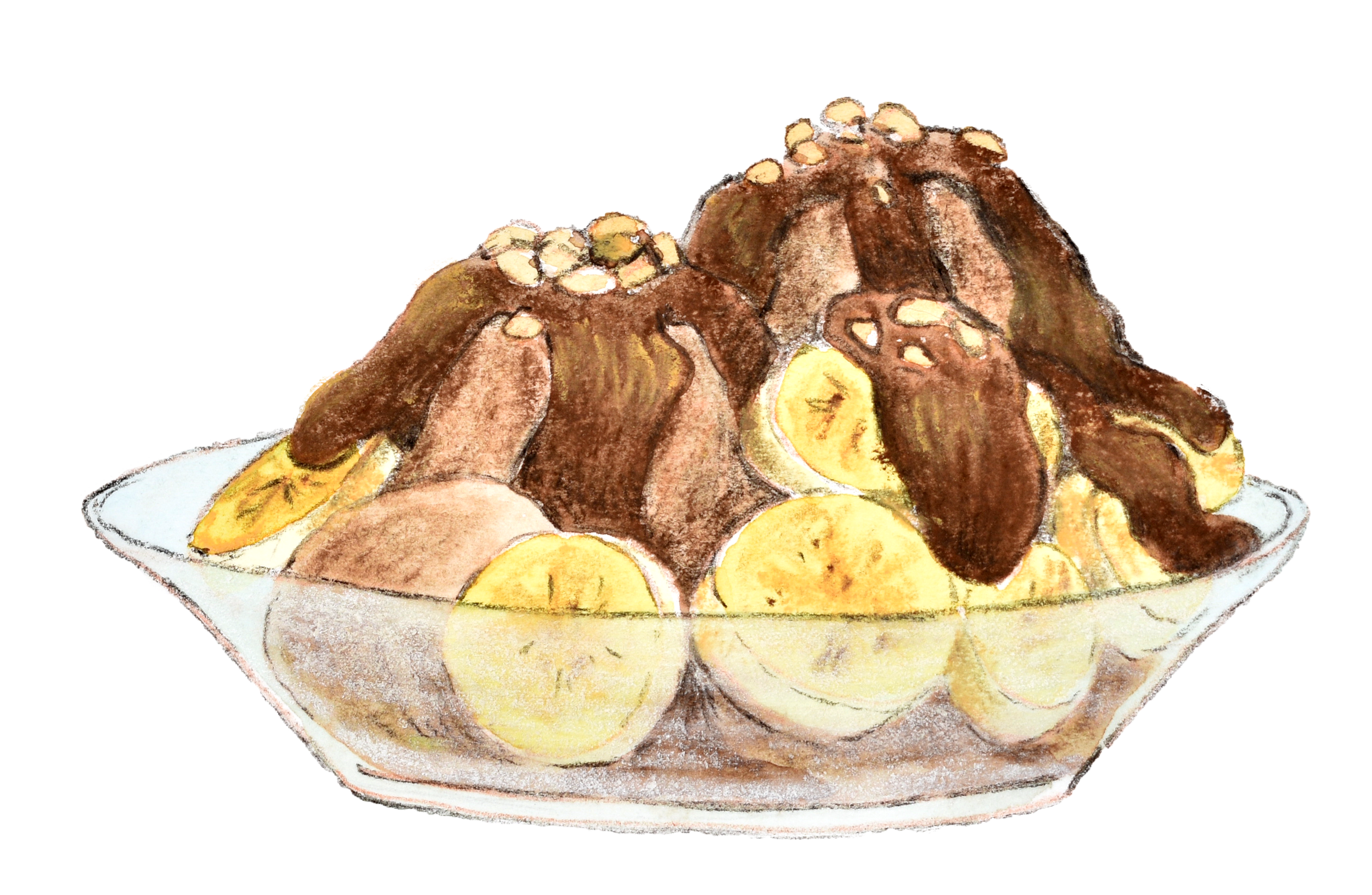
Bat Conservation
Presented by Artist, Labonie Roy
“Over the last two years, bats have cropped up in my day to day experiences in different ways. Paranoid news headlines presented them very differently from the shy, graceful creatures I see from my window every night. In an effort to reconcile this contradiction, I realised that bats have a much bigger presence in our lives than I could have imagined.” - Labonie Roy
“Banana Fudge Sundae”
WHY ARE BATS IMPORTANT?
Beloved by Plants, Forests and Dessert Chefs
Quietly (or at higher pitches than we can hear) bats flutter around while the world sleeps, keeping balance in multiple ecosystems. They are incredibly efficient pollinators, and seed dispersers and help control insect populations. We are connected to bats through the natural spaces around us, the flowers we admire, and even the food we eat. Would you believe me if I told you that we have bats to thank for banana-fudge sundaes?
“Horseshoe Bat and Cacao Plant”
Most bats in the world eat insects like moths, beetles, assorted grubs, and larvae - keeping insect populations balanced. They make rapid, high-pitched sounds that bounce off plants and animals around them, helping them locate insects mid-flight. They can recognize their own returning calls, and differentiate them from the calls of other individual bats. Unchecked, plant-eating insects would devour plants faster than they can grow, flower, and produce seeds, affecting the amount of greenery around us. Some of these plants, like rice, almonds, and cacao (which makes chocolate) are farmed commercially and make their way to our kitchens because of bats.
Some bats drink sweet nectar from flowers. Their heads and bodies are covered in fur, a characteristic trait of mammals. As they feed, their furry snouts and bodies collect pollen, which gets transferred to the next flower they feed on. This makes them incredible pollinators - to the extent that plants like banana, agave, and jamun, among others, have evolved pale, night-blooming flowers which are easily visible to bats in the dark, and invite them with a strong fragrance.
Frugivorous bats eat a variety of fruit, and poop out the undigested seeds. If the fruit is too large to eat on the go, bats carry them to their roosts, eat the pulp and drop the seed to the ground. If the seed falls in a safe place, it takes root and sprouts into a new plant. Bats can travel many kilometres while feeding and disperse seeds to new places, helping ecosystems diversify.
“Cave Nectar Bat and Banana Flower”
Certain tropical plants actually grow better if their seeds have traveled through a bat’s digestive system, leading to stronger and healthier forests. Bats also disperse seeds of many common fruits and nuts, such as papaya, passionfruit, mango and cashew - which is a favorite sundae topping of mine.
“Bats Losing Habitat”
WHAT ARE THE CHALLENGES FACING BATS?
Perhaps because we know so little about them, we often view bats with fear and disgust. Globally, harmful myths and stories lead to skewed perceptions around bats - that they drink human blood, carry rabies, and are pests. Due to these beliefs, bats are often “exterminated” in large numbers, or chased from their homes. In some parts of the world, bats are also hunted for food and traditional medicine.
Here is a resource that delves into these myths and debunks them. Bats feature widely in South Asian folklore and are also regarded with reverence and respect.
Habitat loss at a global scale affects all living beings, and bats are no exception. Research now shows how habitat loss not only harms animals but humans as well by giving rise to zoonotic diseases. Climate change is also affecting bat populations and health.
In North America, a fungal infection called White-Nose Syndrome is wiping out bat populations.
Although wind energy is hugely beneficial, bats in areas with wind turbines often die due to collisions. Researchers around the world are working to address this.
“Indian Flying Fox and Cashew Plant”
WHAT CAN WE DO TO HELP?
Study Bats
Organizations like Bat Conservation International, and Merlin Tuttle’s Bat Conservation conduct and publish research on a global scale.
Here, you can find out more about organizations operating in your country and learn more about these fascinating creatures.
Celebrate Bats
Create spaces around you where you can observe and learn more about bats. Why not start with a bat-friendly garden?
Resources for children that can change the way they view bats:
The Bat Book by Charlotte Milner
Protect Bats
Inform yourself before discussing bats and accidentally perpetuating myths about them.
A few practical ways to protect and support your night-flying neighbors by Bat Conservation International.
Create artwork and share with the hashtags #artistsforpollinators & #creatureconserve

